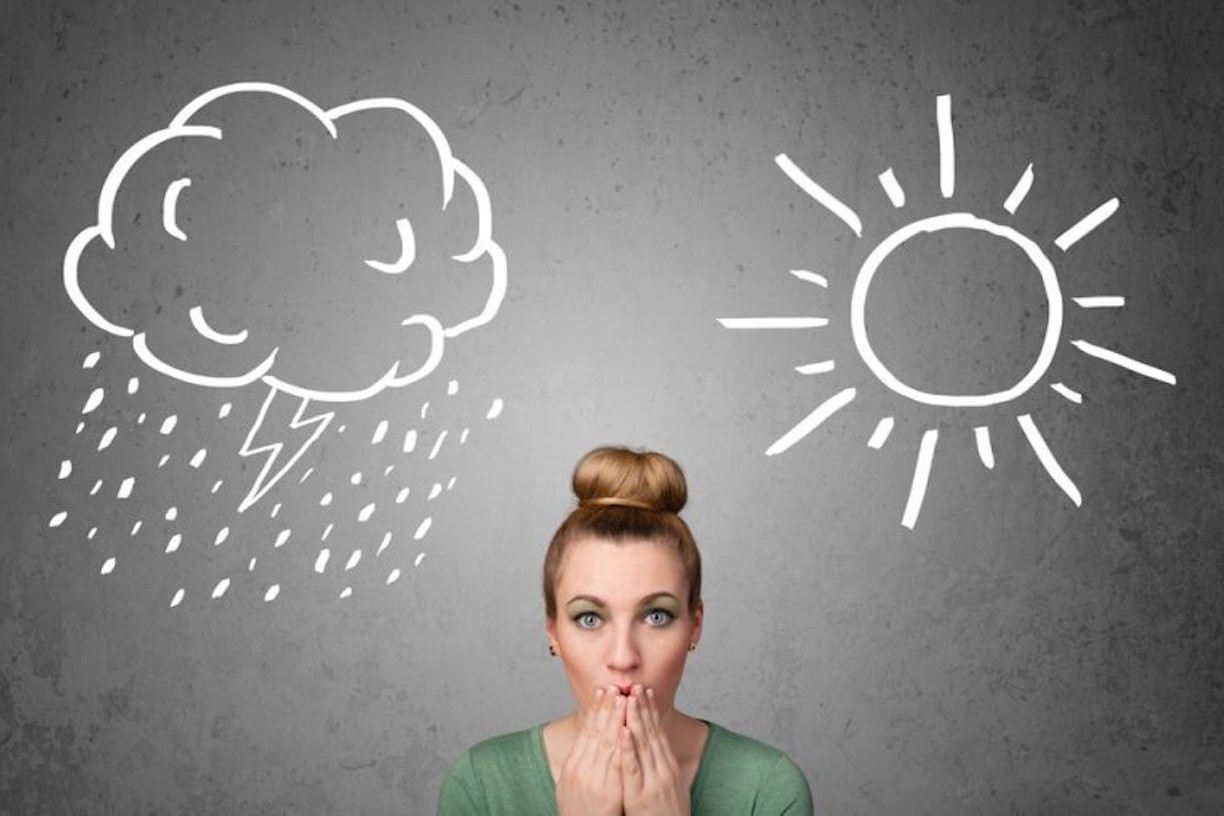
Meteoropathy: how it manifests and how to treat it
Meteoropathy (or Seasonal Affective Disorder) manifests itself cyclically with symptoms such as mood swings, drowsiness and fatigue that appear during seasonal changes, particularly in the autumn and winter period, and then improve as spring approaches
More frequent in those who already have problems with anxiety or depression, meteoropathy in its most intense forms can even affect the quality of life of those who suffer from it.
What is meteoropathy
The term ‘meteoropathy’ refers to a number of physical and mental disorders that occur depending on variations in the weather or seasonal changes in climate.
From a scientific point of view, in 1984, psychiatrist Norman E. Rosenthal identified meteoropathy as Seasonal Affective Disorder (SAD), defining it as a psychiatric disorder specifically related to environmental variations.
According to the psychiatrist, the malaise is due to the body’s difficulty in adapting to changes in the weather.
SAD is a disorder that manifests itself with:
- affective and behavioural symptoms;
- variable intensity;
- cyclical periodicity.
SAD is characterised by depressive symptoms that recur regularly at the same time and, most commonly, in winter.
In the ‘classic’ form of the disorder (Winter-SAD), the clinical symptoms have their onset at the beginning of the autumn season, reach their peak in the winter season and resolve or improve during the summer season.
However, there is also a summer form of the disorder: this is Summer-SAD
Less common, it affects about 3% of patients, with symptoms that start at the beginning of the spring season, worsen during the summer season and resolve or improve during the winter months.
Meteoropathy, the most common symptoms are:
- mood swings (depression, irritability, nervousness, etc.);
- drowsiness and excessive need for sleep;
- tendency to social isolation;
- exhaustion and asthenia;
- difficulty concentrating;
- increased appetite, especially for carbohydrates;
- stomach ache;
- joint pain.
The causes
In addition to the meteorological influence, the causes of Seasonal Affective Disorder can also be traced to biological factors, related to the production of
- serotonin: called the ‘feel-good hormone’, it is a neurotransmitter that is stimulated by sunlight and produces a feeling of pleasure and well-being.
- melatonin: is a hormone that acts as a ‘biological clock’ as it is activated during the night hours and is the main regulator of sleep.
Those suffering from seasonal affective disorder are more affected by the change of seasons, as they tend to produce high amounts of serotonin during the summer, thus becoming sleep-deprived and more irritable, and to produce higher amounts of melatonin during the winter months, becoming more prone to sleepiness and a worsening of mood.
The photoperiod
According to Rosenthal’s so-called ‘Photoperiod Hypothesis’ (i.e. the duration of daily natural light), ‘meteoropathy’ would also be caused by an increase in individual susceptibility as a function of the shortening of the daily light period (which decreases in the winter season).
For these reasons, it is probably possible to observe great variability in the prevalence of SAD in different geographical areas:
- is highest in high latitude countries (where the photoperiod is very short in the winter months);
- it is lowest in low-latitude countries (where the photoperiod is less reduced in the winter months).
Some people are more at risk of suffering from meteoropathy, in particular
- women, specifically those who are already subject to premenstrual syndrome, a disorder that also has a cyclical pattern and shares many of the symptoms with SAD (hyperphagia, hypersomnia, weight gain, craving for carbohydrates, anergy, worsening of affective symptoms in the evening hours)
- the elderly;
- those suffering from alterations, neurological or psychological, in mood, sleep-wake cycle;
- those who already suffer from depressive and anxious or related symptoms (the various changes to which the organism is subjected exacerbate pre-existing disorders);
- people who have a particularly disordered, stressful and irregular lifestyle;
- those suffering from pathologies such as rheumatism, headaches, hypertension, etc.
Remedies against meteoropathy
One of the treatments for SAD is light therapy or phototherapy (light therapy): as mentioned, photoperiod-related alterations can influence mood cycles.
This suggests that light therapy can be an effective treatment.
This therapy, in particular, uses special lamps that emit ultraviolet rays (similar to those found in sunlight).
Light therapy can also consist of natural exposure to sunlight, spending more time outdoors.
Exercise has also proven to be an effective form of therapy, while from a pharmacological point of view, SSRI (selective serotonin reuptake inhibitors) antidepressants in particular have proven to be effective.
It may also be useful to undertake psychotherapy, particularly cognitive-behavioural psychotherapy, to help the person identify and reduce negative thoughts and behaviour and to learn new healthy ways to better manage symptoms.
Lastly, there are also practical measures that can be adopted and maintained throughout the year in order to strengthen the person’s personal resources and avoid isolation, stress and anxiety, which, as we have seen, can favour the onset of SAD.
These include:
- relaxation and meditation techniques
- increased physical exercise and outdoor activity;
- dietary precautions (such as limiting starches and particularly sugars);
- making one’s environment brighter and sunnier;
- planning a winter or summer trip depending on the type of SAD.
Read Also
Emergency Live Even More…Live: Download The New Free App Of Your Newspaper For IOS And Android
Winter, Beware Of Vitamin D Deficiency
Vitamin D, What It Is And What Functions It Performs In The Human Body
Depression, Symptoms And Treatment
Paranoid Personality Disorder: General Framework
The Developmental Trajectories Of Paranoid Personality Disorder (PDD)
Reactive Depression: What It Is, Symptoms And Treatments For Situational Depression
Seasonal Affective Disorder (SAD), The Other Name For Meteoropathy
Depression In The Elderly: Causes, Symptoms And Treatment



